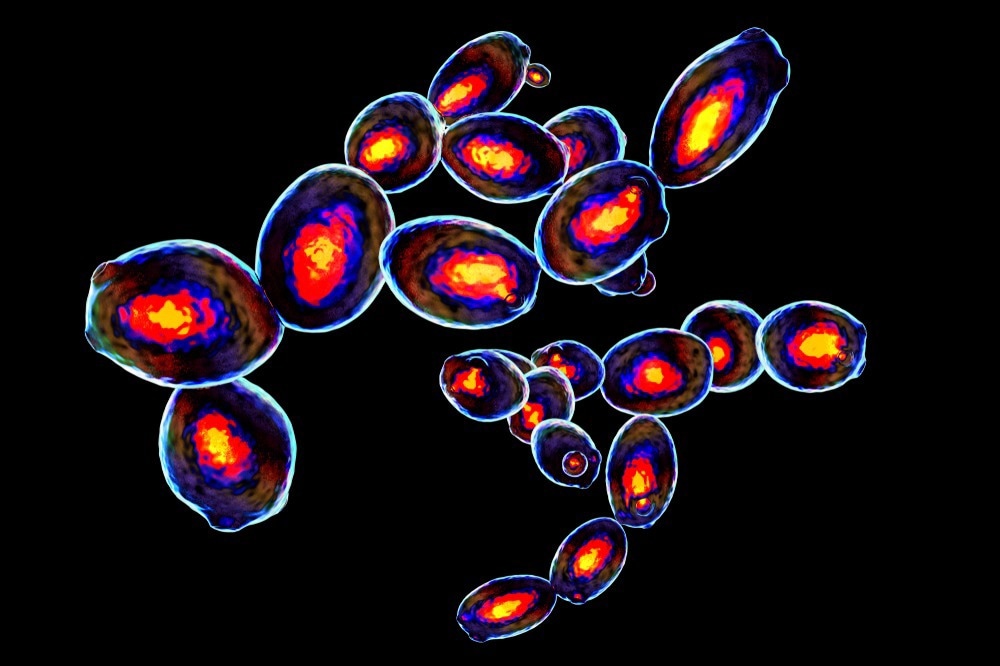Acoustic-assisted hydrodynamic focusing is a technique used in flow cytometry to improve cell positioning and flow rate, ensuring that cells pass by the detector in a single file at equal speed to one another and allowing the best accuracy when determining cell size and composition.

Image Credit: Kateryna Kon/Shutterstock.com
Hydrodynamic focusing or acoustic positioning can be used individually to organize cells during flow cytometry, but as the name suggests, both may be combined for optimum results. The function and application of each technique will be discussed in more detail below.
What is Hydrodynamic Focusing?
Hydrodynamic focusing is the primary method through which cells are arranged into single file and individually passed by the detector. It is commonly utilized in most flow cytometry machinery.
A sheath fluid is forced down a channel containing the detector along with the sample fluid at the same speed to ensure even laminar flow so the particles experience minimal friction. The sheath fluid is pumped around the particle delivery nozzle, which has a tunable orifice size through which particles are forced at a slightly lower pressure than the sheath fluid. Thus, the machinery can be set to allow a single particle or cell to be drawn into the flow at a time, aided by a tapering decrease in channel diameter as the detector is approached.
The sample fluid and sheath fluid do not mix, and thus, ordinary sterile water can be used rather than the buffers and serum-free mediums generally used for the sample fluid. However, surfactants or buffers may be included in the sheath fluid to adjust surface tension and pH, though consideration must be given to the high-pressure low CO2 environment experienced, for which phosphate or bicarbonate buffers are less suitable.
Phenoxyethanol may be added to the sheath fluid in small quantities to act as a sterilizer and to reduce surface tension, which aids in maintaining constant speed between it and the sample fluid, as does increasing viscosity by the addition of compounds such as polyvinylpyrrolidone (PVP).
How does Acoustic Focusing Improve Precision?
Acoustic focusing may be used separately or in combination with hydrodynamic focusing to further align cells into a single file line that coincides perfectly with the focal point of the detector laser at the center of the sample fluid. In this case, acoustic radiation is used to push the cells or particles into line as they traverse the channel, usually achieved by acoustic standing wave generators placed before the sample fluid and sheath fluid come into contact. As a result, the cells are pre-aligned as they enter the narrow channel containing the detector.
In combination, these techniques allow a significantly higher flow rate to be employed for the sheath fluid, and an equally greater sample analysis rate while maintaining highly homogeneous particle positioning. For example, hydrodynamic focusing alone might achieve a coefficient of variation of only 2.43% with a flow rate of 12 μL per minute, increasing notably to 6.73% at a flow rate of 1,000 μL/min.
Utilizing acoustic-assisted hydrodynamic focusing, a lower coefficient of variation of 2.35% and 2.65% can be achieved at the same respective flow rates. It should be noted that cells or particles within the sample fluid can only be off-center within the diameter of this fluid, without passing into the sheath fluid. Hence, if a 10 μm wide particle is already contained perfectly within a 10 μm wide sample stream, then maximum precision is already achieved, and acoustic assistance will provide no benefit.
The pressure and velocity of an acoustic wave can be calculated from the compressibility, density, and viscosity of the medium, while the resulting force experienced by a particle or cell within said medium is from its radius and density.
Therefore, the magnitude of acoustic force required to move a particle can be calculated with foreknowledge of these characteristics. Acoustic focusing does not align cells by pushing them equally from each side and putting the sample under compressive force, but by generating a low-pressure region in the center of the sample fluid that gradients to high pressure at the edge of the channel, and thus particles are “pushed” to the center and then back if they stray.
The frequency of the standing wave generated during acoustic focusing is dependent on the diameter of the capillary channel and the distance to the standing wave generator, where the position of the low-pressure standing wave node must be fine-tuned to the center.
The frequencies utilized in acoustic cell manipulation are above 1 MHz, as frequencies below this level cause cavitation in water and can cause cells to undergo lysis. In contrast, the intensity of acoustic waves is kept in the low milliwatt range to avoid cell damage and fluid heating.
Fluid heating is not normally an issue in flow cytometry owing to the fast flow rate of the sample and shear fluids, though given the small volume, if slow flow rates are employed, then even lower energy acoustic focusing may need to be used. For very small particles, Brownian motion forces may exceed the acoustic forces acting on the particle, and thus acoustic focusing is not helpful for these particles and hydrodynamic focusing alone must be used to align them.
Sources:
Ward, M. D. & Kaduchak, G. (2018) Fundamentals of Acoustic Cytometry. Current protocols in cytometry, 84. Available at: https://currentprotocols.onlinelibrary.wiley.com/doi/10.1002/cpcy.36
Gayán, E., Condón, S., Álvarez, I., Nabakabaya, M., & Mackey, B.. (2013). Effect of Pressure-Induced Changes in the Ionization Equilibria of Buffers on Inactivation of Escherichia coli and Staphylococcus aureus by High Hydrostatic Pressure. Applied and Environmental Microbiology, 79(13), pp. 4041–4047. doi.org/10.1128/aem.00469-13
Kuo, y. & Tanner, R. R. (1972) Laminar newtonian flow in open channels with surface tension. International Journal of Mechanical Sciences, 14(12). Available at: https://www.sciencedirect.com/science/article/pii/0020740372900458
Further Reading